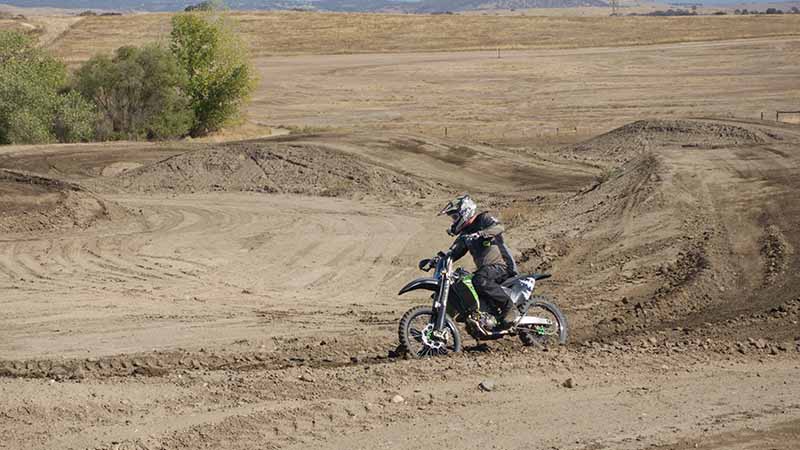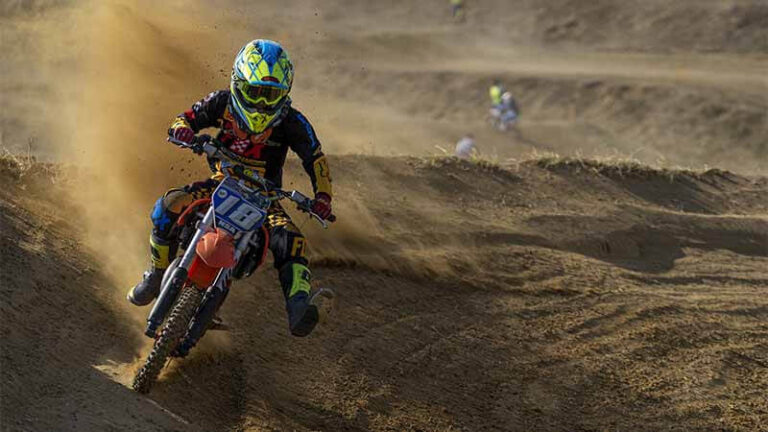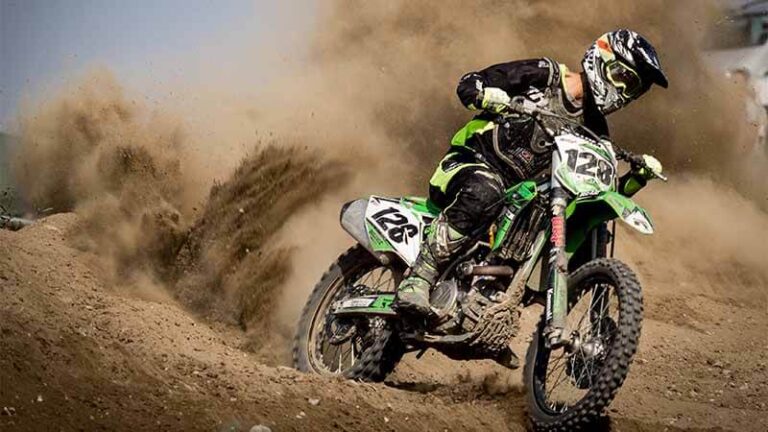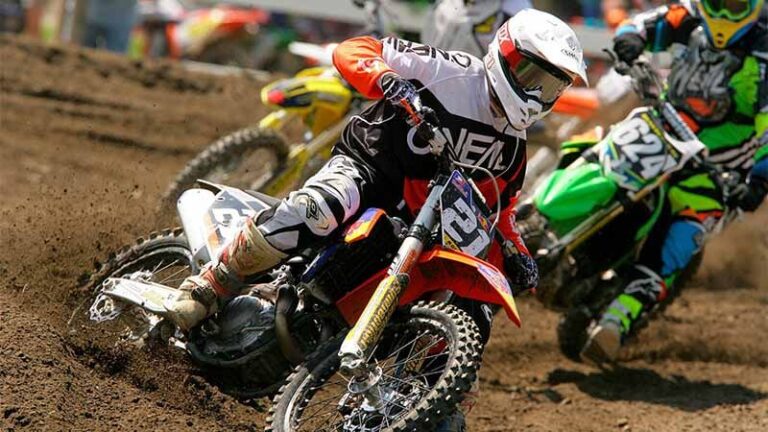What is Dirt Biking and How to Get Started
Off-road motorcycle, often known as dirt biking, is a thrilling and adventurous sport that involves riding motorbikes over unpaved surfaces such as dirt tracks, off-road trails, and hilly terrain. It is a popular hobby for thrill seekers and adrenaline junkies who like the excitement of navigating difficult terrains on two wheels.
In this blog post, we’ll look at what dirt biking is, what equipment you’ll need to get started, and the various varieties of dirt biking available. We’ll also go over the advantages of dirt riding, the risks involved, and how to be safe while participating in this fun sport.
What is Dirt Biking?
Dirt biking is a motorbike sport that involves riding on off-road terrain. As the rider must handle a variety of obstacles like jumps, steep inclines, and uneven terrain, it requires a distinct combination of skills such as balance, agility, and control. The activity is typically done in off-road riding venues such as dirt tracks and motocross courses, but it may also be enjoyed in open fields, mountains, and other natural settings.
Equipment Needed for Dirt Biking
Dirt biking necessitates the use of specific equipment. The following are the essentials;
- Dirt Bike: A dirt bike is a motorcycle that is lightweight and designed for off-road use. These bikes have high ground clearance, knobby tires for increased traction on uneven areas, and rugged suspension systems.
- Safety Gear: When dirt biking, safety should be a top priority, and proper safety gear is vital. A helmet, goggles, gloves, a chest protector, knee and elbow pads, and a robust pair of boots are all required.
- Clothing: You’ll need clothing that will protect you from the elements as well as any debris that your bike may kick up. A long-sleeved shirt, jeans, and a jacket are required.
- Tools: Basic tools such as wrenches, screwdrivers, and pliers are essential to have on hand in case of mechanical problems throughout your journey.
Types of Dirt Biking
There are numerous forms of dirt biking, each with its own set of obstacles and features. Below are some of the most common types;
- Motocross: The most popular type of dirt biking, motocross involves racing on a closed-circuit track. Motocross tracks are often created with jumps, banked turns, and other obstacles to put the rider’s skills to the test.
- Enduro: An enduro race is a long-distance, off-road event that puts a rider’s stamina and skill to the test. These races are frequently held in tough natural settings, with cyclists navigating numerous hazards and terrains.
- Trials: Trials are a precision-based sport of dirt biking in which you navigate an obstacle course without touching the ground. The rider must maintain balance and control as they navigate the course, which often includes tight curves, steep inclines, and other obstacles.
Benefits of Dirt Biking
Dirt biking is an exciting activity with numerous advantages. Here are some of the most important;
- Increased Physical Fitness: Because dirt biking requires a lot of physical work, it can help improve cardiovascular health, strength, and endurance.
- Improved Cognitive Function and Mental Clarity: Riding a dirt bike necessitates great concentration and focus, which can assist increase cognitive function and mental clarity.
- Stress Reduction: For many people, dirt biking is an excellent method to reduce tension and escape the stresses of everyday life. The rush of adrenaline and the sensation of adventure can be a pleasant distraction from the monotony of daily life.
- Social Connection: Dirt biking can be a social activity and a terrific opportunity to interact with others who like the sport as much as you do.
Risks of Dirt Biking
While dirt biking can be a thrilling activity, it is not without danger. If sufficient safety precautions are not taken, the high speeds and steep terrain can cause accidents and injuries. Here are a few of the hazards of dirt biking;
- Falls: Falls are a common risk when dirt biking, and they can cause minor scrapes and bruises to more serious accidents like shattered bones or brain trauma.
- Collisions: Collisions with other riders or stationary objects such as trees or rocks can be dangerous and result in serious injuries.
- Mechanical Failure: Dirt bikes require routine maintenance and might experience mechanical failure while riding, resulting in accidents or injuries.
- Environmental Dangers: Off-road riding can expose riders to environmental risks such as rocks, tree branches, and other debris, which can cause injury.
Safety Tips for Dirt Biking
Taking the proper safety procedures is vital for staying safe while dirt biking. Here are some safety guidelines for participating in this thrilling sport;
- Always Use Appropriate Safety Gear: When riding, always wear a helmet, goggles, gloves, chest guards, knee and elbow pads, and sturdy boots.
- Inspect Your Bike: Before each ride, inspect your bike for mechanical faults and make sure it’s in good working order.
- Obey Trail Markings: Ride only on recognized paths and avoid riding in places not suitable for off-road riding.
- Cycle with a Friend: Cycling with a friend can add an extra layer of safety and assistance in the event of an accident or injury.
- Ride within Your Ability Level: To minimize accidents and injuries, don’t push yourself too hard and ride within your skill level.
Conclusion
Dirt biking is an exhilarating and demanding activity that provides a one-of-a-kind experience for riders of all ability levels. Whether you’re a seasoned veteran or just getting started, it’s critical to take the necessary precautions to avoid accidents and injuries. Dirt biking may be a fun and gratifying exercise that gives physical, emotional, and social benefits with the correct equipment, training, and preparation.




